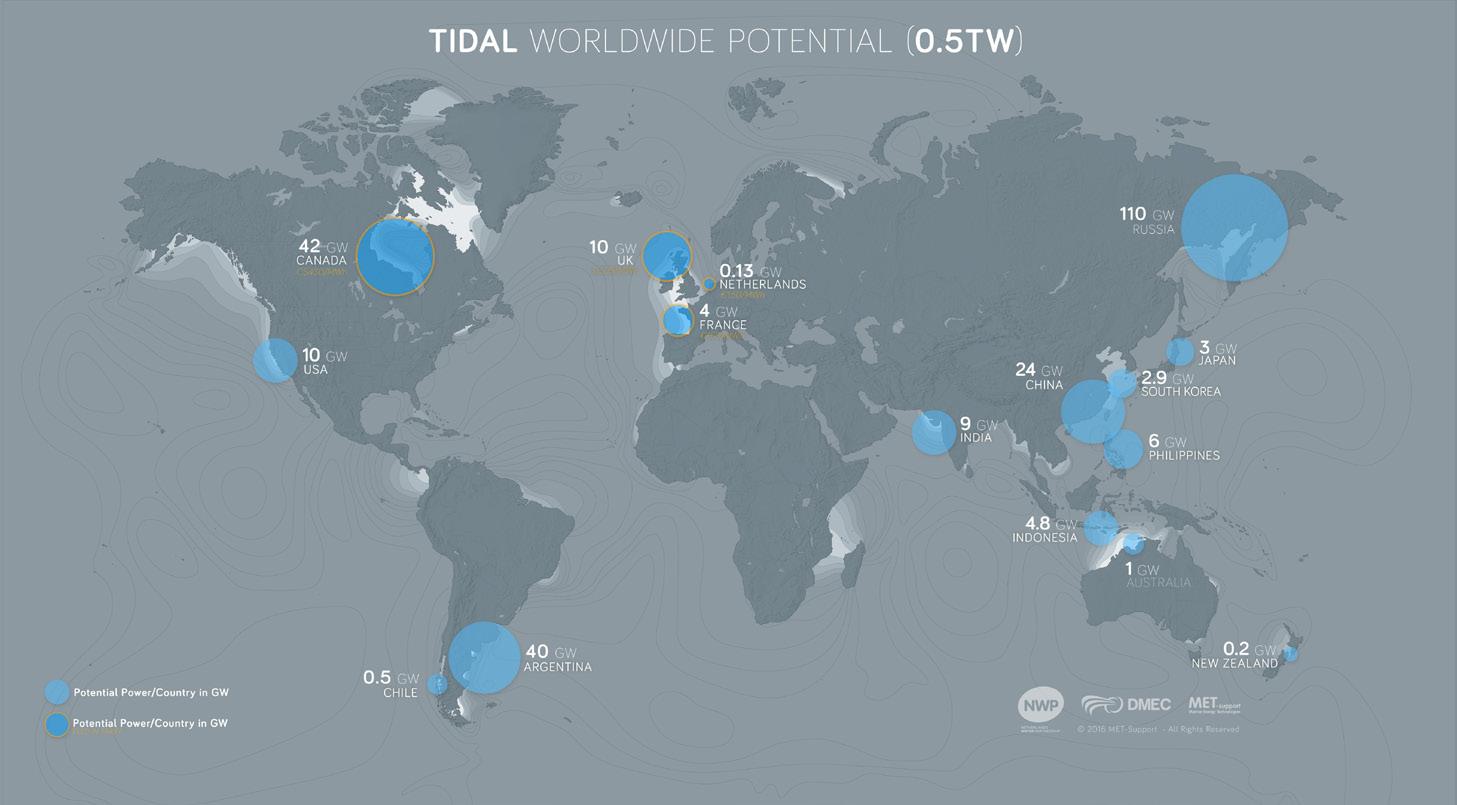
1 minute read
Tidal Energy
from MEA Brochure 2020
by Navingo BV
3
Tidal Energy
Advertisement
Tidal Energy Converters
Tides are the rise and fall of sea levels caused by the combined effects of the gravitational forces exerted by the Moon and the Sun and the rotation of Earth. The tides also create ocean currents that can reach high flow speeds in certain areas around the world. Both forms of energy can be used to generate renewable electricity.
Tidal range technologies generate energy from the vertical head difference between the high tide and the succeeding low tide. The tidal range is the vertical difference between the high tide and the succeeding low tide. Tidal range technology uses the same principles as conventional hydropower and requires a natural or a man-made structure (e.g. a dam or barrier) to impound a large body of water. The difference between the tide height inside and outside the impounded area causes water to be discharged from one side to the other. This water is forced through hydro turbines inside the structure to generate energy. The difference between high and low tide, as well as the size of the area of enclosed water, influence the power output of tidal range technologies. They can be deployed in locations where large water masses flow into compounded areas, such as bays or estuaries.
Tidal stream technologies convert the kinetic energy in tidal currents into electrical energy. The energy output of these Tidal Energy Converters (TECs) is determined by the speed of the currents. The devices can either be implemented in existing civil structures such as storm surge barriers, fixed directly to the seabed, or can be buoyant and tethered to the seabed. TECs are generally modular and intended for array deployment to obtain a significant combined energy output.
Source: www.dutchmarineenergy.com
MEA SME’s working on Tidal Energy
DHV Turbines EEL Energy FishFlow Tidal Power Gkinetic
Hydrowing Ltd Infinities Global Tidal Flyer Water2Energy




